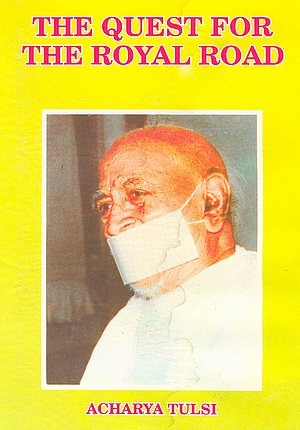Non-Violence is a remarkable treasure of life. It can be derived through inner wakefulness and is always protected on account of constant alertness. The responsibility of its protection lies with certain noteworthy persons who possess the boundless wealth of knowledge and philosophy. Humbleness, penance and restraint are the characteristics that raise them to lofty heights. Their hearts are filled with affection for all the souls of the Universe. They are respected in all the three worlds. The Tirthankaras who were so highly qualified, realised what non-violence meant, they saw and practised it in their lives. The principle of non-violence as enunciated by them is well understood by the avadhijnani[1] sages as well as by manahparayajnani[2] sages. The shutadhara[3] sages are well-versed in it. It is followed in practice by the Vaikriyalabdhidhara[4] sages and also by the sages with many notable achievements.
Among these accomplished sages, some have such powers that by their mere touch incurable diseases get cured. Anything which is in contact with their bodies is used as medicine. Those sages possess beejabuddhi[5] and koshthabuddhi[6] and they have attained the conventional knowledge and have mastered the various original sources.
They have attained mastery over ksheerashrava[7]1 madhavashrava[8] and sapirashrava[9]. Because of their powers, that never diminish, they are capable of procuring food for thousands of their devotees.
Among the followers of the path of non-violence, there are certainly those who are engaged in the pursuit of knowledge, philosophy and righteous behaviour. At the same time, there is a whole line of ascetics engaged in doing the penances. Among those ascetics are called chaturtha bhakta1 undertaking the fast, shashtha bhaktas2 doing bela3 ashama bhaktas4 tela and those who perform penances ranging from a fortnight to one month, two months, four months and six months. Some ascetics do ayambil, eat only one meal a day, observe the vow called neevi in which they abstain from taking jaggery, ghee, milk, etc., as part of their routine penance. Some ascetics practice particular yogic postures. Some expose themselves to the afternoon heat during the summer and some take other vows of a special nature.
Among those who follow the path of non-violence, there are also the sages with remarkable intellectual powers. They are always eager to enhance the power of non-violence a thousandfold by resorting to intellectual practices like autpattiki,[10] vainayiki,[11] karmiki,[12] parimaniki,[13] etc. They are all eager to find repose under the cooling effect of nonviolence and wish to realise Truth.
The scope of non-violence is very wide. It is the need, like the sun not only for all human beings, but for all living beings. Without it, any talk about peaceful co-existence remains merely a matter of imagination.
The lustre of non-violence is the imperishable treasure of life. Those who are able to find that treasure create new history life Kalasankariska's son Sulasa or Kabir's son Kamal. They feel themselves from all those conventional practices having a trace of violence in them. They cannot support vilence in the name of meeting the requirements of the situation.
An individual's mental attitude becomes clear-cut only after he has developed awareness about the powers of nonviolence. He cannot cause harm to anyone. As against this, an individual given to violence regards his own interests far more important than the world interests. But such an individual himself feels distressed when he harasses anyone. In the process of enshaving someone, he loses his own freedom. While imposing discipline on someone, he himself loses his own independence. That is why an individual given to violence can never be contented or never feel complete peace. There is some kind of tension in whatever he does. While passing through violent moments, he is possessed by intense frenzy and loses his consciousness as it were. The moment that frenzy subsides, he repents, he weeps and is filled with compunction.
The moment a violent individual becomes familiar with the power of non-violence, he is impatient to find repose in its cooling impact. His mind becomes restless. Inspite of that, the sanskaras of his previous actions push him towards violence again and again. When the effect of those sanskaras completely wears out, he proceeds on the supreme path of non-violence. Protected by non-violence, he in turn, becomes the protector of that path. Those who protect non-violence, guide the world and redeem the beings who have lost their sense of direction in the wilderness of violence, fear, affliction, indecision, doubt and dissatisfaction.
Intellect having perceptual cognition not dependent on verbal symbol - as in taneous comprehension.
Intellectual having perceptual cognition not dependent on verbal symbol = as cognition developed by practical experience.
 Acharya Tulsi
Acharya Tulsi
